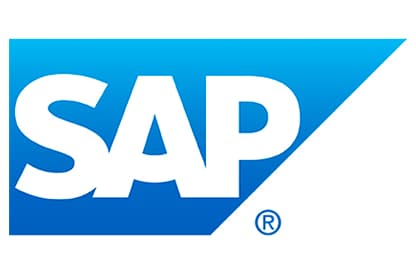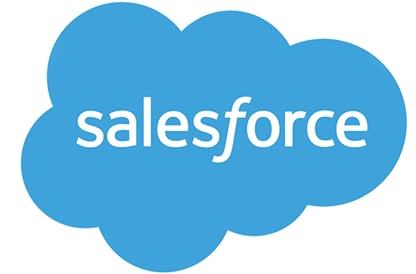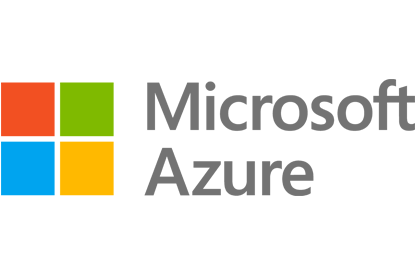Why OpenText
Why OpenText
Overview Why OpenText
OpenText brings decades of expertise to help you unlock data, connect people and processes, and fuel AI with trust
Manage and connect data
Unify data seamlessly across your enterprise to eliminate silos, improve collaboration, and reduce risks
AI-ready information
Get AI-ready and transform your data into structured, accessible, optimized information
Built-in security and compliance
Meet regulatory and compliance requirements and protect your information throughout its lifecycle
Empowering people
Overview Empowering people
OpenText helps people manage content, automate work, use AI, and collaborate to boost productivity
Customers
See how thousands of companies around the world are succeeding with innovative solutions from OpenText
Employees
Our people are our greatest asset; they are the life of the OpenText brand and values
Corporate Responsibility
Learn how we aspire to advance societal goals and accelerate positive change
Partners
Find a highly skilled OpenText partner with the right solution to enable digital transformation
How we compare
Content Management
Service Management
Deploy anywhere
Overview Deployment options
Explore scalable and flexible deployment options for global organizations of any size
Sovereign cloud
Local control. Global scale. Trusted AI
Private cloud
Your cloud, your control
On-premises
Free up resources, optimize performance and rapidly address issues
Public cloud
Run anywhere and scale globally in the public cloud of your choice
AI leadership
Overview Aviator AI
See information in new ways
OpenText™ Aviator AI
AI that understands your business, your data, and your goals
OpenText™ MyAviator
Say hello to faster decisions. Your secure personal AI assistant is ready to get to work
OpenText™ Business Network Aviator
Gain better insights with generative AI for supply chains
OpenText™ Content Aviator
Power work with AI content management and an intelligent AI content assistant
OpenText™ Cybersecurity Aviator
Improve your security posture with AI cybersecurity and agile threat detection
OpenText™ DevOps Aviator
Enable faster app delivery, development, and automated software testing
OpenText™ Experience Aviator
Elevate customer communications and experiences for customer success
OpenText™ Service Management Aviator
Empower users, service agents, and IT staff to find the answers they need
Aviator AI
Overview Aviator AI
See information in new ways
OpenText™ Aviator AI
AI that understands your business, your data, and your goals
OpenText™ MyAviator
Say hello to faster decisions. Your secure personal AI assistant is ready to get to work
OpenText™ Business Network Aviator
Gain better insights with generative AI for supply chains
OpenText™ Content Aviator
Power work with AI content management and an intelligent AI content assistant
OpenText™ Cybersecurity Aviator
Improve your security posture with AI cybersecurity and agile threat detection
OpenText™ DevOps Aviator
Enable faster app delivery, development, and automated software testing
OpenText™ Experience Aviator
Elevate customer communications and experiences for customer success
OpenText™ Service Management Aviator
Empower users, service agents, and IT staff to find the answers they need
Analytics
Overview Analytics
Predict, act, and win with real-time analytics on a smarter data platform
OpenText™ Aviator Search(AI)
Give users access to the answers they need, faster and easier, with multi-repository AI-based search that lets you contextualize everything from clicks to conversations
Business Network
Overview Business Network
Connect once, reach anything with a secure B2B integration platform
Content
Overview Content
Reimagine knowledge with AI-ready content management solutions
OpenText™ Content Aviator(AI)
Supercharge intelligent workspaces with AI to modernize work
Cybersecurity
Overview Cybersecurity
Integrated cybersecurity solutions for enterprise protection
OpenText Cybersecurity for SMBs & MSPs
Purpose built data protection and security solutions
OpenText™ Cybersecurity Aviator(AI)
Reinvent threat hunting to improve security posture with the power of agile AI
DevOps
Overview DevOps
Ship better software—faster—with AI-driven DevOps automation, testing, and quality
Experience
Overview Experience
Reimagine conversations with unforgettable customer experiences
Observability and Service Management
Overview Observability and Service Management
Get the clarity needed to cut the cost and complexity of IT operations
OpenText™ Service Management Aviator(AI)
Redefine Tier 1 business support functions with self-service capabilities from private generative AI
APIs
Overview APIs
Build custom applications using proven OpenText Information Management technology
OpenText™ API Services
Build it your way with OpenText Cloud APIs that create the real-time information flows that enable custom applications and workflows
Device and Data Protection
Overview Device and Data Protection
Protect what matters, recover when it counts
Unified Endpoint Management Tools
- OpenText™ Endpoint Management
- OpenText™ ZENworks Suite
- OpenText™ ZENworks Service Desk
- OpenText™ ZENworks Configuration Management
- OpenText™ ZENworks Endpoint Security Management
- OpenText™ ZENworks Full Disk Encryption
- OpenText™ ZENworks Endpoint Software Patch Management
- OpenText™ ZENworks Asset Management
Solutions
Trusted Data & AI
Overview Trusted Data & AI
Secure information management meets trusted AI
OpenText AI Data Platform
A unified data framework to elevate data and AI trust
OpenText Aviator Studio
A place where you can build, deploy, and iterate on agents in your data's language
OpenText Discovery
A set of tools to help ingest data and automate metadata tagging to fuel AI
OpenText Data Compliance
A suite of services and APIs that make governance proactive and persistent
OpenText Aviator AI Services
Professional services experts who help you on your AI journey
Information Reimagined
Overview Information Reimagined
Get greater visibility and sharper insights from AI-driven information management. Ready to see how?
Knowledge reimagined
Transform daily work with enterprise content management powered by AI
Service Management reimagined
Cut the cost and complexity of IT service management, AIOps, and observability
Connections reimagined
AI-powered B2B integration for supply chain success
Conversations reimagined
Drive value, growth, and loyalty with connected customer experiences
Engineering reimagined
Agile development and software delivery? It only seems impossible
Security reimagined
Cybersecurity for the Enterprise
Decisions reimagined
Unlock insights with AI data analytics
Artificial Intelligence
Overview Aviator AI
See information in new ways
OpenText™ Aviator AI
AI that understands your business, your data, and your goals
OpenText™ MyAviator
Say hello to faster decisions. Your secure personal AI assistant is ready to get to work
OpenText™ Business Network Aviator
Gain better insights with generative AI for supply chains
OpenText™ Content Aviator
Power work with AI content management and an intelligent AI content assistant
OpenText™ Cybersecurity Aviator
Improve your security posture with AI cybersecurity and agile threat detection
OpenText™ DevOps Aviator
Enable faster app delivery, development, and automated software testing
OpenText™ Experience Aviator
Elevate customer communications and experiences for customer success
OpenText™ Service Management Aviator
Empower users, service agents, and IT staff to find the answers they need
Industry
Overview Industry solutions
Improve efficiency, security, and customer satisfaction with OpenText
Energy and resources
Transform energy and resources operations with cloud, cybersecurity, and AI
Financial services
Boost customer experience, compliance, and efficiency with AI
Government
Reimagine your mission with government-secure information management
Healthcare and life sciences
Improve care delivery and patient engagement with AI-powered solutions
Legal
Modernize legal teams with automated, AI-powered legal tech solutions
Manufacturing
Modernize manufacturing operations and logistics to reduce costs and ensure compliance
Retail and consumer goods
Enhance consumer engagement with omnichannel retail solutions and AI
Enterprise Application
Overview Solutions for Enterprise Applications
Run processes faster and with less risk
Services
Services
Overview Services
Achieve digital transformation with guidance from certified experts
Professional Services
Modernize your information management with certified experts
Customer Success Services
Meet business goals with expert guidance, managed services, and more
Support Services
Turn support into your strategic advantage
Managed Services
Free up your internal teams with expert IT service management
Learning Services
Discover training options to help users of all skill levels effectively adopt and use OpenText products
Professional Services
Overview Professional Services
Modernize your information management with certified experts
Customer Success Services
Overview Customer Success Services
Meet business goals with expert guidance, managed services, and more
Support Services
Overview Support Services
Turn support into your strategic advantage
Managed Services
Overview Managed Services
Free up your internal teams with expert IT service management
Learning Services
Overview Learning Services
Discover training options to help users of all skill levels effectively adopt and use OpenText products
Partners
Find a Partner
Overview Find a partner
Information is the heartbeat of every organization. We build information management software so you can build the future
Cloud Partners
Overview Cloud Partners
OpenText partners with leading cloud infrastructure providers to offer the flexibility to run OpenText solutions anywhere
Enterprise Application Partners
Overview Enterprise Application Partners
OpenText partners with top enterprise app providers to unlock unstructured content for better business insights
Partner Solutions
Overview Partner Solutions
Discover flexible and innovative offerings designed to add value to OpenText solutions
Resources for Partners
Overview Resources for Partners
Discover the resources available to support and grow Partner capabilities
Support
Overview Customer Support
Get expert product and service support to accelerate issue resolution and keep business flows running efficiently
Resources
Overview Resources
Explore detailed services and consulting presentations, briefs, documentation and other resources
Choose your region:
Europe, Middle East and Africa
Asia–Pacific
What is enterprise content management?

Enterprise content management (ECM) is a comprehensive approach to organizing, storing, and utilizing an organization's diverse information assets. It encompasses the strategies, methods, and tools used to capture, manage, store, deliver, and govern content across an enterprise. This content can include documents, images, videos, emails, and any other form of digital information crucial to a business's operations.
ECM systems serve as centralized repositories for all of an organization's content, providing a structured framework for managing the entire information lifecycle—from creation to archival or deletion. These systems are designed to streamline workflows, enhance collaboration, ensure compliance with regulations, and improve overall operational efficiency.
Enterprise content management
How has enterprise content management evolved?
Growing out of the document management systems of the 1990s, ECM platforms were originally designed to bring an enterprise layer to the automation of core back-end, document-focused processes. Despite addressing important business functions, many ECM implementations were under-utilized because the solutions were originally focused on the technology rather than the business processes and people using it—with organizations more interested in getting control of their content than enabling what people could do with it.
This led to systems that were excellent at capturing, storing, and managing content but were difficult to use and labor-intensive for the end-user—often requiring them to change their work processes to accommodate the system. As a result, the enterprise content management system became primarily a system of record—which was great for control and governance of official business records—while isolated silos of information spread throughout the organization as users created new content in their preferred systems.
These solutions created a repository—a single source of truth—where content could be stored, managed, searched and retrieved. And as more and more content (structured and unstructured) was created, enterprise content management software evolved to provide users with the content they need, in their preferred applications, at the time they need it—ensuring content is searchable and accessible for users, auditors, and compliance. Plus, today’s tools allow for flexible deployment—on-premises, hosted, or SaaS—and provide advanced analytics to drive insight and action based on data within the content.
Why is enterprise content management important to businesses?
- Improved efficiency: ECM systems centralize information, making it easier for employees to find and use the documents they need.
- Increased productivity: By centralizing content and making it easily accessible, employees spend less time searching for information and more time on value-adding activities.
- Better decision-making: ECM provides quick access to accurate, up-to-date information, enabling users to make more informed decisions faster.
- Higher-quality customer service: With quick access to customer information and related documents, businesses can provide faster, more personalized customer service.
- Enhanced collaboration: Enterprise content management offers teams a central platform to work on documents simultaneously and share information seamlessly, all while maintaining version control.
- Stronger information governance: Get the tools you need to manage content’s entire lifecycle, from creation to disposal. This ensures information is properly managed, reducing risks associated with data breaches or non-compliance with regulations.
- Tighter regulatory compliance: Meet document retention and data privacy requirements with secure storage, access controls, and audit trails.
- Scalability: ECM supports the ability to securely process as many objects per day as required (potentially into the millions).
What core capabilities should you look for in an ECM solution?
Organizations continue to require the core functionality that enterprise content management software provides. Expanding to a content services approach takes ECM a step further, giving organizations a new way of connecting content to digital business—delivering tools end-users can use to easily work with, share, and collaborate on content.
The most effective enterprise content management solutions use content integration to give users access to the right content within the applications they’re already using today, such as SAP®, Microsoft® 365, Salesforce, Guidewire, and SAP SuccessFactors®. At the same time, advanced ECM tools build on control and governance functionalities to enable secure information-sharing and collaboration across the enterprise and with external partners.
Other content services to take advantage of include:
- Content capture: Allows you to digitize physical documents and collect digital content from various sources. Content capture may include technologies like optical character recognition (OCR) for converting scanned documents into searchable text.
- Deep, out-of-the-box integrations: Minimizes the need for application switching by integrating ECM tools with the lead applications teams are working in every day.
- Workflow/business process management: Automates and optimizes business processes involving content, such as approval processes or invoice processing.
- Collaboration tools: Facilitates team collaboration on documents and projects, often including features like simultaneous editing and commenting.
- Search and retrieval: Allows users to quickly find content with powerful search capabilities, including full-text search, metadata search, and faceted search.
- Mobile and remote access: Enables secure access to content from any device or location, which is increasingly important in hybrid work environments.
- Records management: Ensures long-term content preservation, retention schedules, and defensible disposition in compliance with legal and regulatory requirements.
- Information governance and compliance: Supports policy enforcement, audit trails, and role-based access controls to manage risk and meet regulatory standards such as the General Data Protection Regulation (GDPR) or the Health Insurance Portability and Accountability Act (HIPAA).
- Analytics and reporting: Provides insights into content usage, user behavior, and process efficiency to guide continuous improvement.
What’s new with enterprise content management?
Enterprise content management software needs to keep pace with market demands by delivering new functionality to help businesses elevate information management and boost ROI.
Advanced capabilities include:
- Cloud-based ECM: Many organizations are moving towards cloud-based ECM solutions, which offer greater flexibility, scalability, and accessibility.
- Artificial intelligence (AI) tools: With an AI content assistant and machine learning, organizations can improve content classification, search capabilities, and process automation—plus leverage advanced analytics for new content insights.
- Widespread integrations: Enterprise content management systems are increasingly integrated with popular collaboration tools like Microsoft Teams and Slack to improve workflows and user adoption.
- Multi-cloud support: Leading ECM platforms support hybrid and multi-cloud environments, giving organizations the flexibility to optimize performance, avoid vendor lock-in, and maintain compliance across cloud providers.
What enterprise content management tools does OpenText have to offer?
OpenText offers a comprehensive suite of enterprise content management tools that can help organizations improve efficiency, reduce costs, and enhance compliance. By providing a centralized repository for digital content, automating workflows, and enabling secure access, OpenText empowers businesses to make better use of their information assets.
Explore how OpenText’s market-leading enterprise content management software can transform your business:
OpenText™ Content Management
Securely govern the information lifecycle by integrating with leading applications, such as SAP®, Microsoft® 365, Salesforce, and SAP SuccessFactors®.
A Leader in content platforms
Resources
Related products
OpenText™ Content Management
Link knowledge to processes with enterprise content management tools





